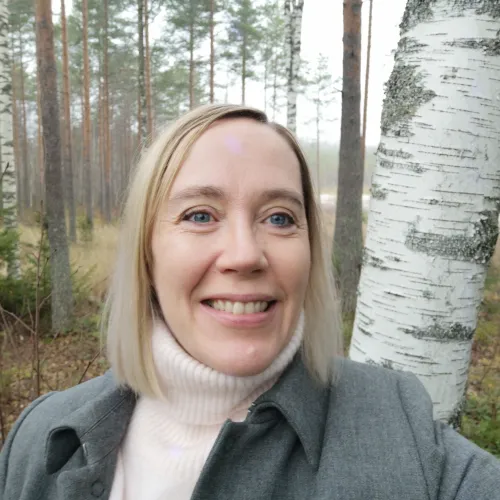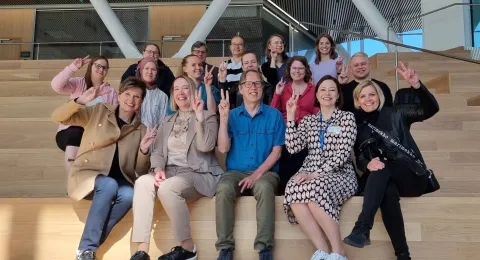BioProt visited HUS Siltasairaala on 11.5.2023. We had very interesting and multidisciplinary afternoon in the seminar under the topic "Use of the protective equipment in hospital -Present and Future". Krista Koljonen (LUT) opened the seminar and shortly introduced the BioProt project. Following topics were presented: (1) Future protective equipments (Patrik Koskinen, LAB), (2) Results of the research survey (Susanna Tella, LAB), (3) Scientific proof on the benefits of protective equipment (Veli-Jukka Anttila, HUS, Mehiläinen), (4) Guidance of usage of protective equipment in hospitals (Tuula Ala-Röyskö, HUS), (5) Experiences of the protective equipment in intensive care unit during Covid-19 (Ida Virto, HUS), (6) Questions related to procurement and distribution during normal and time of crises (Henna Granqvist, HUS) and (7) National preparation on availability of protective equipment- HEDE- project (Katri Laatikainen, Research Center of Finnish Defence Forces).
BioProt is a two-year project started at the beginning of 2022 and has been funded by Business Finland, including six research institutes (LUT, LAB, VTT, JYU, Luke, HU), four companies with own projects (Lifa Air, Teknikum, Premix, Teknos) and five In-kind companies (HUS, Mehiläinen, Berner, Optitune, Lindström Group).
Unfortunately, there was a serious accident just happened nearby and, therefore, the tour in Siltasairaala was cancelled. Nevertheless, we had very interesting and informative seminar, having 25 participants on-site and over 30 attending remotely.
Future protective equipment and survey
Patrik Koskinen (LAB) asked Chat-GP about the future face masks, concluding that same topics were mostly found in the current research made in BioProt. He also introduced the prototype developed in the project. Susanna Tella (LAB) presented the initial results from the survey made for health care professionals. The survey was implemented during December 2022 and January 2023, receiving over 70 answers. The results showed that breathability, convenience to use and safety were seen most important properties of the face masks.
Scientific proof of PPE
According to Veli-Jukka Anttila (HUS, Mehiläinen), already in 1867 antiseptic chemicals were applied, such as carbolic or phenic acid, reducing the amount of wound infections based on the Pasteur's theory, not so much on research work. However, probability of a surgeon to wear a face mask has been high (over 90%) since 1930. Nevertheless, there is lack of good research work, especially made outside hospitals. Commonly, it seems that it is useful to wear PPE to prevent the occupational infection of personnel in hospitals. There are, however, lots of practices in hospitals without controlled research based on the logical thinking.
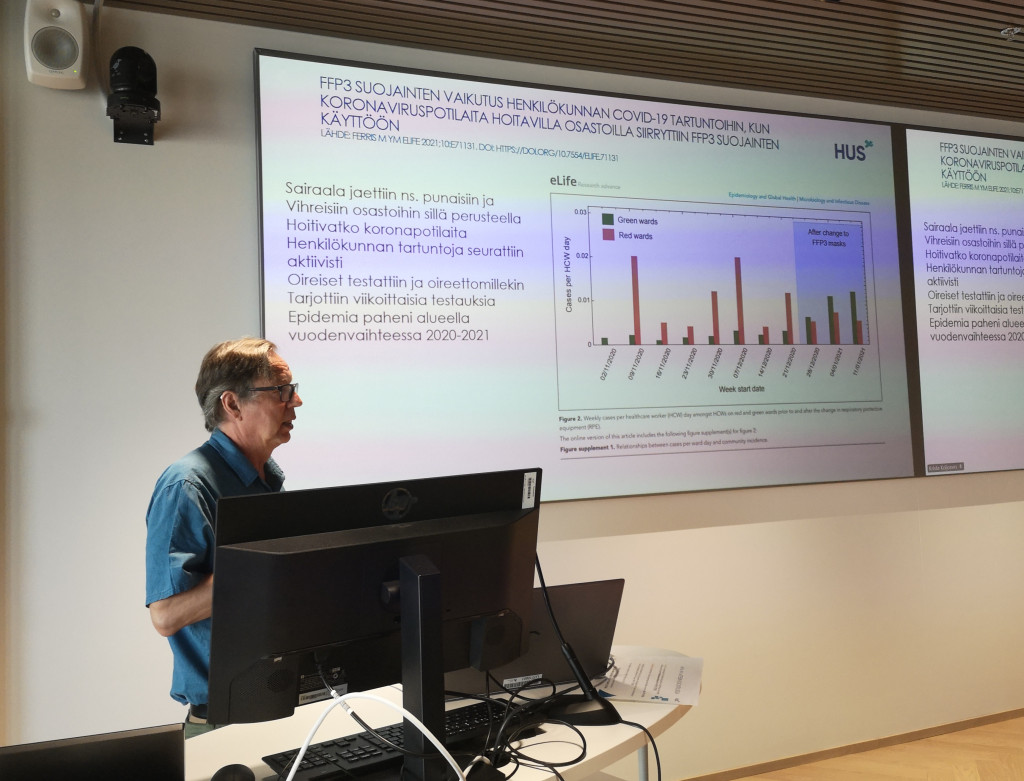
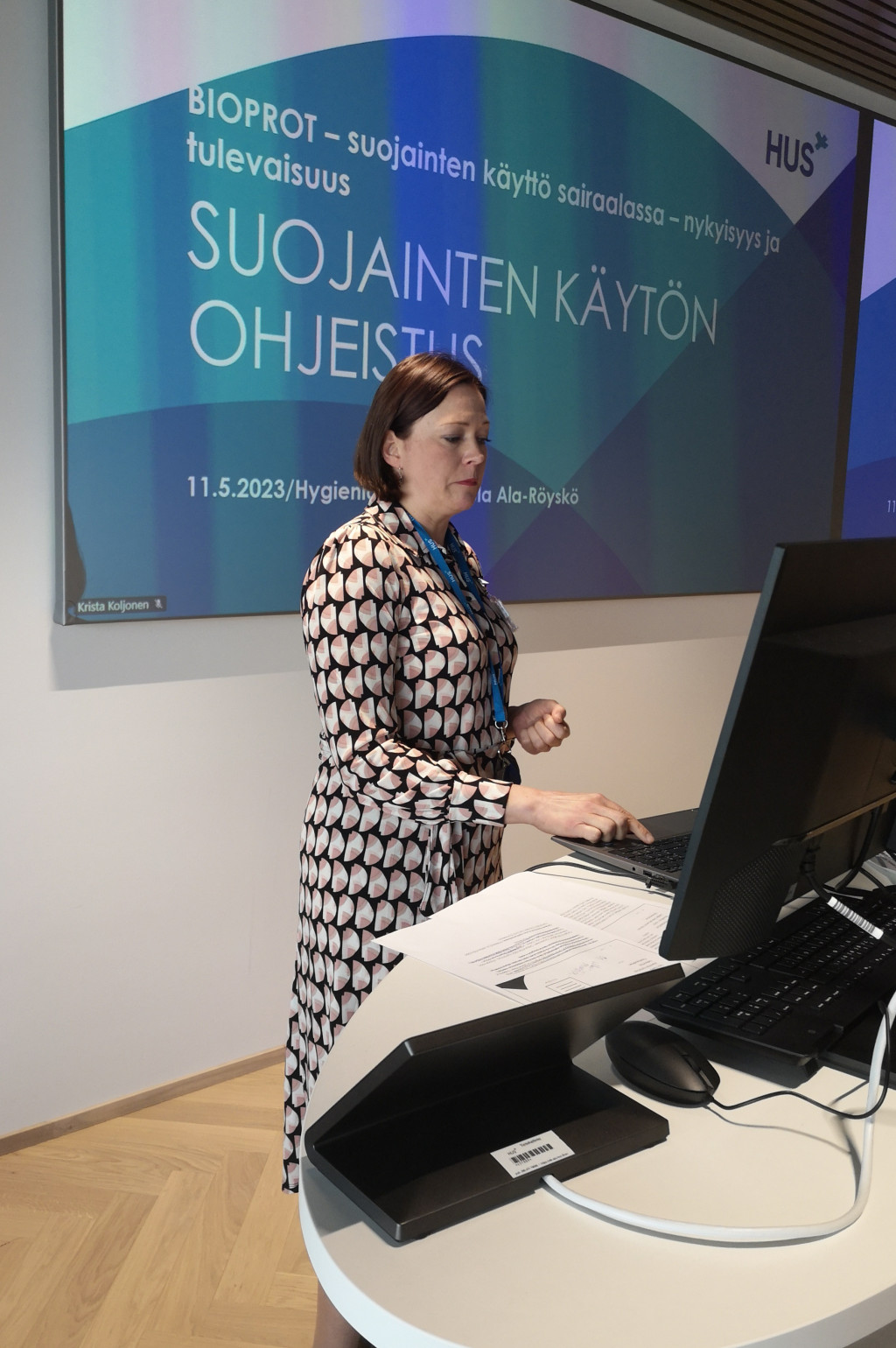
Guidance and experiences on PPE during Covid-19
According to Tuula Ala-Röyskö (HUS), there are numerous guidance in hospitals, such as authority, practice, policy, administrative, procedure, treatment, working and patient directions. To get the message through, they should be very clear and informative and, if necessary, include also pictures describing how to act. In hospitals, PPE with different protection degree has been worn to reduce the risks of accidents and disease. In fact, there are instructions which kinds of PPE and FFP2/3 should be wear in different situations and protocols describing how to put them on, take them off and how to test them. Ida Virto (HUS) presented experiences and protocols in intensive care unit during Covid-19. In the time of crises, it was guided to keep as few breaks as possible to save the PPE. In spring 2020, there was a severe lack of PPE, leading to the shocking thought "Who will eventually get the last PPE?". Due to the shortage of PPE, three different reusable face mask models were tested during 2020 and 2021, such as Kemppi, Clean Space Halo and Tiki. These prototypes clearly demonstrated the importance of senses to see, hear and feel while wearing the PPE.
Procurement and distribution and HEDE-project
According to Henna Granqvist (HUS), legislation, functional markets and location are the substantial factors in the procurement process. There are three different states: (1) normal, (2) normal with some larger exceptions and (3) standby with strict regulation, enabling to make some urgent direct procurement. In the state of emergency, there are several problematic aspects, like changes in demand and availability. Preparation to the situation is sometimes difficult, not knowing the nature of the disorder and the cost level. It was stressed that issues related to the legislation should be address during the normal time and pay attention to the procurement law if PPE could be purified by the actors.
Katri Laatikainen (Research Center of Finnish Defence Forces) introduced the HEDE-project which concerned the purification of the face mask using hydrogen peroxide steaming during 2020. The project included several actors, such as Research Center of Finnish Defence Forces, LUT, LAB, Institute of Occupational Heath, FIMEA and Department of Work and Welfare. During the project, over 250 FFP2/3 were purified and tested, showing that after cleaning the products fulfilled the requirements set for FFP2 (Laatikainen et al. 2022, Eurosurveillance 27, 100119).
At the end, Veli-Jukka Anttila (HUS, Mehiläinen) wished that everyone will have something special to think about after the seminar and got some ideas for the future work.
Next Workshops of BioProt
Next Workshop of BioProt organized by Luke will be held at Viikki and Bioruukki on 16.-17.5.2023.
More information
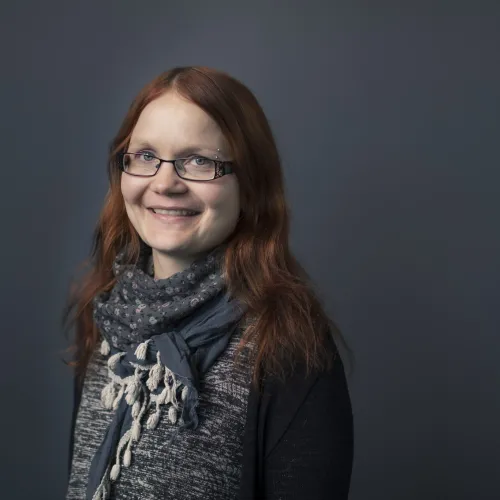
Eveliina Repo
